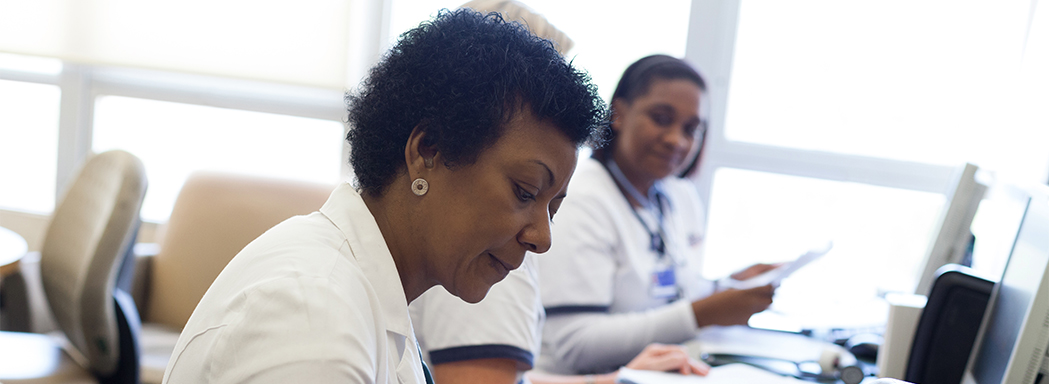Universal Precautions
The concern for occupational exposure to hepatitis B virus (HBV) and human immunodeficiency virus (HIV) among health care workers had led to the development and implementation of "universal precautions" for all hospitalized patients. Universal precautions were designed and recommended by the Centers for Disease Control (CDC) in 1987 and were revised in 1988, based on epidemiologic evidence regarding the transmission of HBV and HIV. Under universal precautions, blood and certain body fluids of all patients are considered potentially infectious for HIV, HBV, and other blood borne pathogens. Physical examinations and a medical history cannot reliably identify all patients infected with HIV or other blood borne pathogens. In the emergency care setting especially, the risk of blood exposure is increased and the infection status of the patient is usually not known. Universal precautions are intended primarily to prevent parenteral, mucous membrane, and non-intact skin exposures of health care workers to blood borne pathogens; therefore, they apply to blood and to other body fluids containing visible blood. Blood is the single most important source of HIV, HBV, and other bloodborne pathogens in the occupational setting. Universal precautions also apply to the following:
- Tissues
- Semen
- Vaginal secretions
- Cerebrospinal fluid
- Pleural fluid
- Synovial fluid
- Pericardial fluid
- Peritoneal fluid
- Amniotic fluid
Universal precautions do not apply to the following list of substances unless they contain visible blood. The risk of transmission of HIV and HBV from these fluids and materials is extremely low or nonexistent:
- Feces
- Nasal secretions
- Sputum
- Sweat
- Tears
- Urine
- Vomit
- Human breast milk
- Saliva
Gloves need not be worn when feeding patients or wiping saliva from skin; although it is recommended that dentists use special precautions since in their profession contamination of saliva with blood is predictable. Health care workers may want to wear gloves if they work in situations in which exposure to breast milk might be frequent.
- Immediately and thoroughly wash hands and other skin surfaces that are contaminated with flood, body fluids containing blood, or other body fluids to which universal precautions apply. Wash hands immediately after gloves are removed.
- Use protective barriers to prevent skin and mucous membrane exposure to blood, body fluids containing blood, and other fluids to which universal precautions apply. The type of protective barrier(s) should be appropriate for the procedure being performed and the type of exposure anticipated.
- Wear gloves when touching blood of body fluids, mucous membranes, or non-intact skin of all patients.
- Wear gloves when handling items or surfaces soiled with blood or body fluids.
- Wear gloves when performing venipuncture and other vascular access programs.
- Wear gloves for performing phlebotomy if cuts, scratches, or other breaks in the skin are present.
- Wear gloves in situations in which contamination with blood may occur--for example, when performing phlebotomy on an uncooperative patient.
- Wear gloves for performing finger or heel sticks on infants and children.
- Change gloves after contact with each patient.
- Do not wash or decontaminate disposable gloves for reuse.
- Wear masks and protective eyewear or face shields during procedures that are likely to generate splashing or droplets of blood or other body fluids to prevent exposure of mucous membranes of the mouth, nose, and eyes.
- Wear gowns or aprons when you anticipate splashing of blood or other body fluids to which universal precautions apply.
- Take care to prevent injuries when using, handling, or cleaning needles, scalpels, and other sharp instruments or devices.
- Do not recap used needles by hand.
- Do not remove used needles from disposable syringes by hand.
- Do not bend, break, or otherwise manipulate used needles by hand.
- Place used disposable syringes and needles, scalpel blades, and other sharp items in puncture-resistant, leak-proof, labeled, or color-coded containers for disposal. Locate these containers close to the use area and replace routinely.
- To minimize exposure during emergency mouth-to-mouth resuscitation, ensure that protective mouthpieces or manual resuscitator bags are available for use in areas in which the need for resuscitation is predictable.
- Refrain from direct patient care or handling of patient-care equipment if one has exudative lesions or weeping dermatitis.
- For laboratory specimens, consider all blood and other body fluids from all patients to be infective. Put these specimens in a well-constructed container with a secure lid to prevent leakage during transport. Avoid contaminating the outside of the container and place laboratory requisitions outside of the container.

